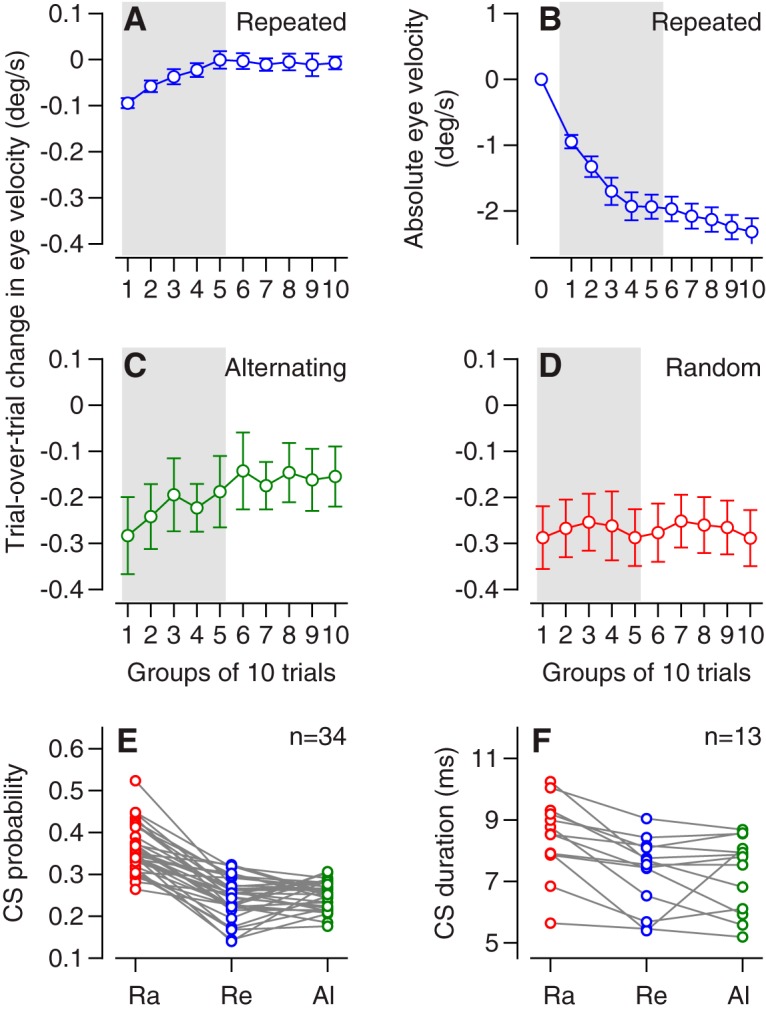Figure 2.

Trial-over-trial learning and properties of CS responses to the instruction with different sequences of learning tasks. A, C, D, Time course of trial-over-trial changes in eye velocity in the analysis interval for learning in blocks of 10 trials. Different graphs show data for repeated (A), alternating (C), and random-direction (D) paradigms. B, Time course of absolute eye velocity in the analysis interval for learning in the repeated paradigm, again in blocks of 10 trials. E, F, The probability (E) and duration (F) of a CS response to an instruction as a function of learning paradigm. The sets of three connected symbols present data for different Purkinje cells tested in all three learning paradigms. Ra, random; Re, repeated; Al, alternating paradigm. After Bonferroni correction: p(Ra, Re) = 1.75 × 10–12 and p(Ra, Al) = 1.1 × 10–10 for probability; p(Ra, Re) = 1.45 × 10–3 and p(Ra, Al) = 0.02 for duration.
